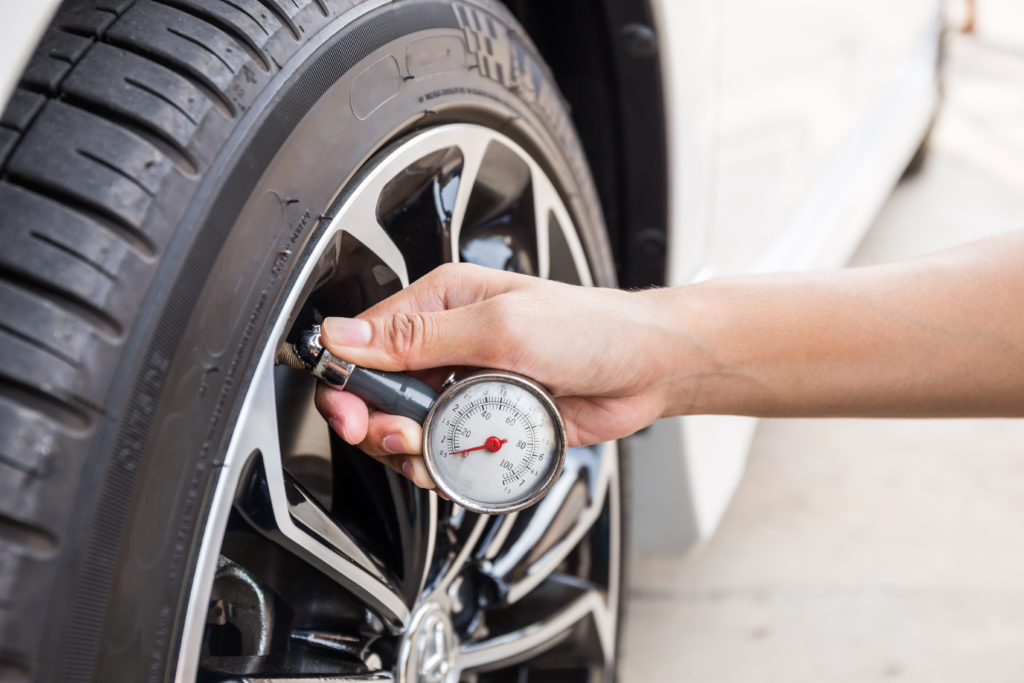Do you know how to efficiently check your tyres? Your tyres are the only part of your vehicle that touches the ground. They also play a huge part in you being able to handle your car with great care. Therefore, it is essential that you know what to look out for and when to spot any damage or wear and tear to your tyres.
Secondly, it is vital that you have good quality tyres from the off. This includes premium quality tyres such as Bridgestone’s Dueler D-Sport and their Turanza T005, both designed to provide superb handling and braking performance on wet and dry surfaces.
Keep reading below to make sure you understand the legal requirements regarding your tyres and their tread depth.
What is the Legal Tread Depth for Your Tyres?
1.6mm is the minimum tread depth that your tyres can be on the road. This applies to the central ¾ of the tread around the complete circumference of the tyre.
Once your tyre tread depth begins to hit around between 1.6mm and 3mm, then it’s time you need to start thinking about ordering yourself a new set of matching tyres!
For many safety reasons, such as a decrease in stopping distance, manufacturers recommend that you should change your tyres once their tread depth hits the 3mm mark. (Just to be on the safe side).
Checking Your Tread Depth
Checking your tread depth can be super simple and super quick. Giving your tyres a quick glance over by looking at the wear indicators in the grooves of the tread pattern can be a good indicator. However, there is a more accurate way of doing it.
A tyre tread depth gauge is a more reliable way of measuring the depth of your tyres. This then gives you a more precise measurement of how deep they actually are. Additionally, they are only small and therefore can be kept in the glove box of your car, ready instantly for when you need it next.

The 20p Test
If the above two aren’t for you, but you have some spare change, then make sure you reach for a 20p. Not only are they great for getting yourself a quick pic ‘n’ mix, but they also come in handy where your tyres are concerned. Inserting the 20p into the lowest tread of your tyres will provide you with good reading. If you can’t see the outer rim around the edge of the coin, then your tyre is safe and has a minimum depth of 3mm. If you can see the rim of the coin, however, then your tyre is less than the recommended 3mm and should be checked by a professional.
When Should I Check My Tyre Pressure?
As unfortunately, the majority of us know that the UK gets our fair share of bad weather (6.5 days a week!). This is why it’s a good idea to check the tread depth of your tyres and your tyre pressure at least once every two to three weeks. The correct tyre pressure is essential when travelling long distances and on motorways.
How Do I Check My Tyre Pressure?
Before beginning to check the pressure of your tyres, it’s important to make sure that you are using a suitable pressure gauge. Pressure can be measured both imperial and metric, so you must use a gauge that matches the pressure information of your vehicle.
Firstly, remove the dust cap from the tyre valve and place the pressure gauge into the tyre valve stem. Press the gauge down evenly to ensure that you get a precise and even reading. Your tyre pressure depends on your vehicle. The majority of cars come with a sticker on the bodywork that states what it should be, however, you should check the vehicle handbook if not.
If your tyres need air, then use a suitable pump and ensure that you keep checking the pressure gauge after each blast.
Finally, ensure that you check all four tyres and the spare tyre if you have one! A spare is always overlooked, but you never know when you might need it. Ensure that it is maintained so you don’t encounter further problems.

Checklist
We’ll leave you with a checklist that is essential to keep your tyres in great condition:
Ensure that you have good quality tyres, to begin with, like these Bridgestone ones.
Check your tread depth once every 2-3 weeks.
Make sure that your tread depth is at the very least 3mm deep.
Check your tyre pressure every 2-3 weeks and refer to your handbook.
